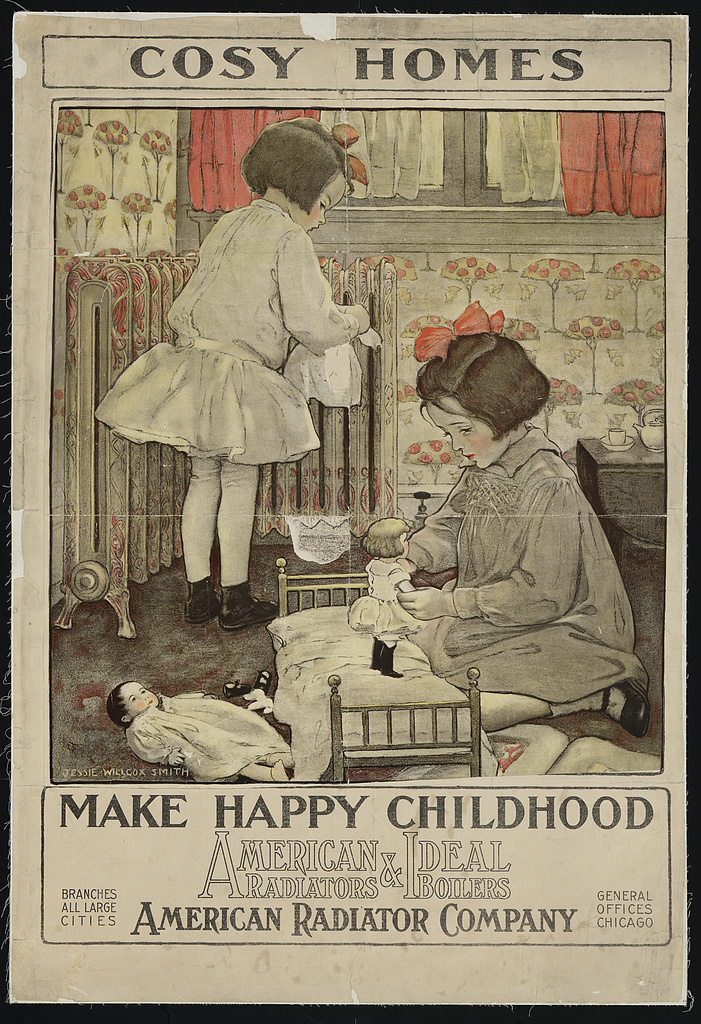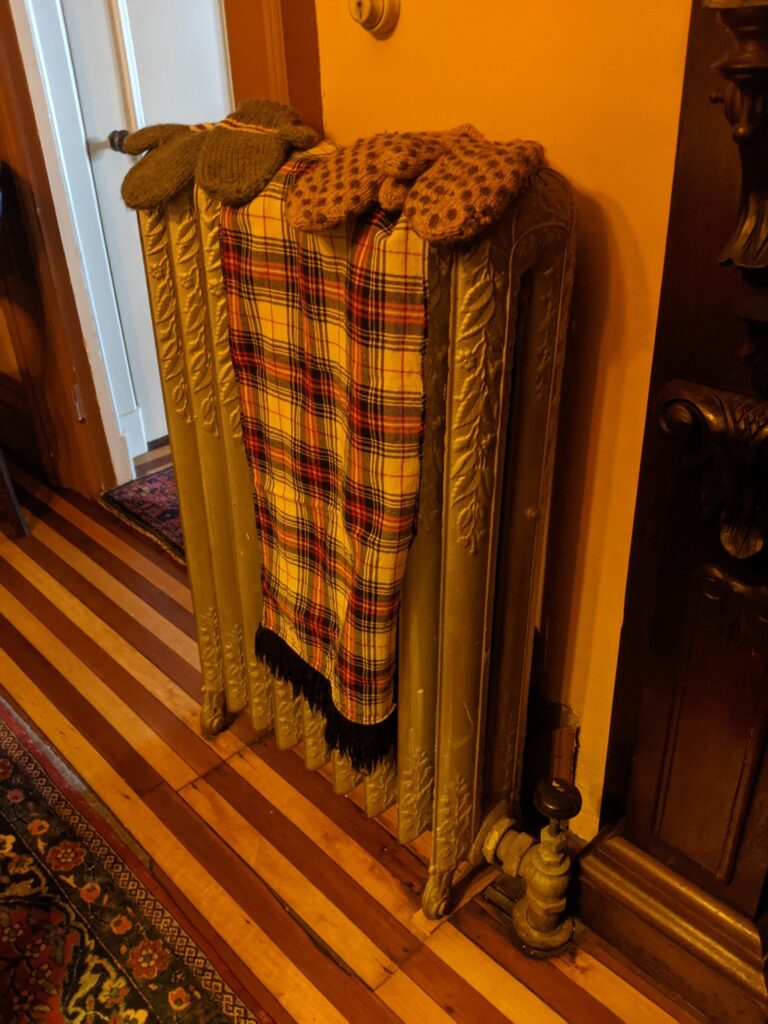Steam radiators were added to the Avery-Copp house in the early 1900s. A hundred years ago they were considered modern, efficient, and a wonderful place to hang your scarves and mittens while they dried. Before the radiator, the main sources of heat were wood and coal stoves, as well as fireplaces. Most of the fireplaces in the Avery-Copp House were actually blocked to prevent heat loss. While we now consider sitting by a fire a romantic novelty on a cold winter night, in the early 1900s fireplaces were considered old fashioned and inefficient. The radiators stayed in use until 2020, when we were pleased to receive a grant from Groton Utilities for an energy efficient split system for heating and cooling. Not only does it provide a more consistent temperature, which better preserves our historic objects, but it is also more environmentally efficient.
We hope you are all staying “cosy” and warm this winter, and hope you’ll consider visiting us when we open for tours in May.

